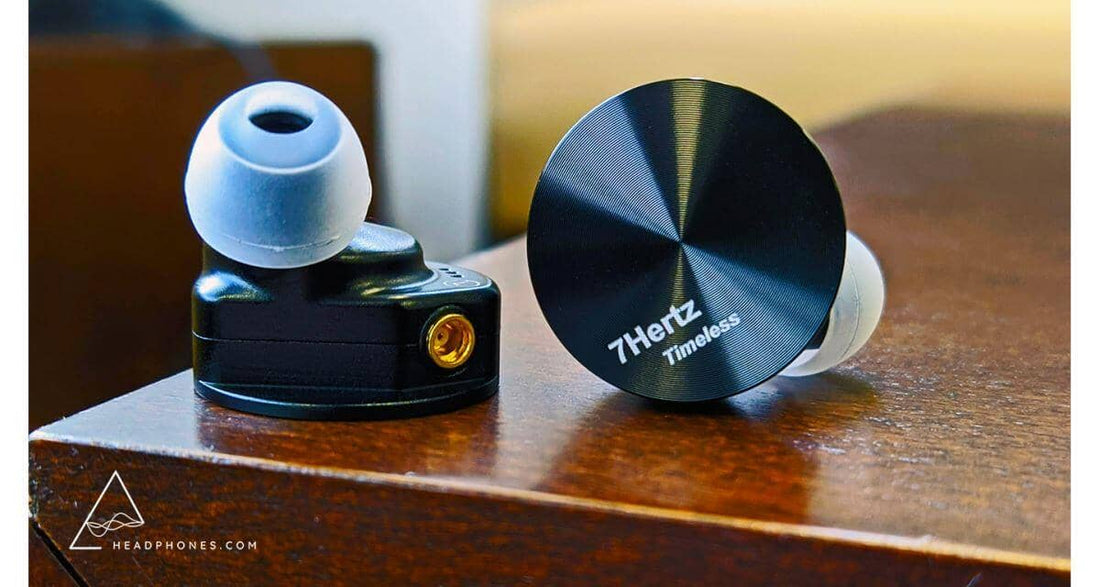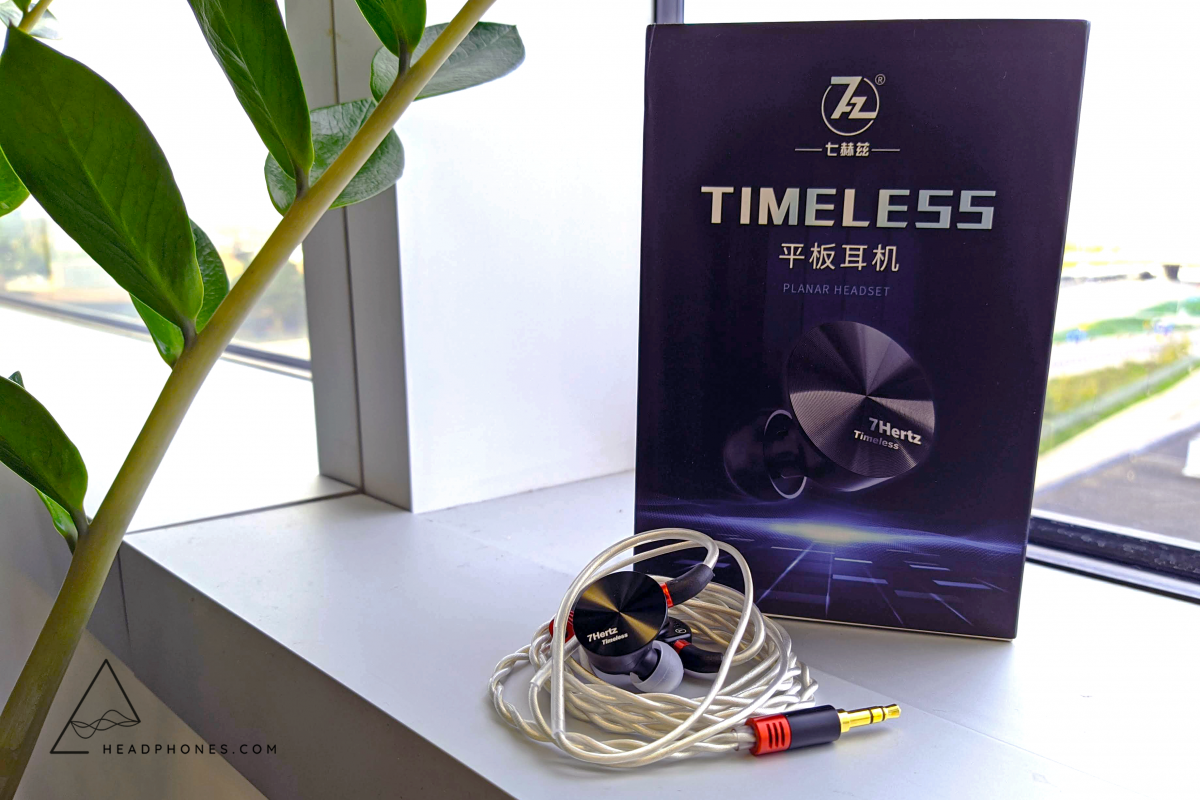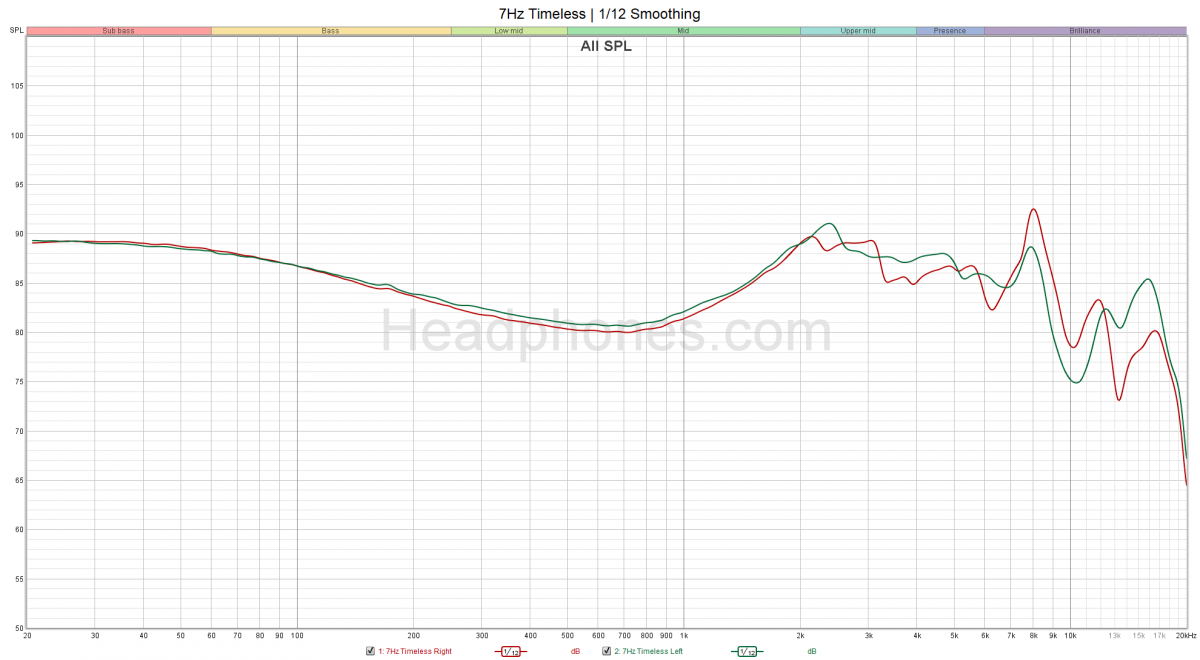7Hz Timeless Review: Uncovering a Genuine Hidden Gem

Introduction
Hands up if you’ve ever heard of 7Hz. No? No one? Well, you’d be forgiven for not knowing of their existence. 7Hz is (or was) yet another obscure Chinese brand that makes unpronounceable IEMs that I’m not sure who buys. The only reason I know of them was through a short peek in the Linsoul catalogue looking for IEMs with spurious marketing claims of Beryllium drivers.
But lo and behold, I have before me a 7Hz IEM. It’s called the 7Hz Timeless and it is a $220 planar IEM with a 14.2 mm driver. Yes, that’s right. We’ll be looking at a planar IEM today, one with a big ol’ driver. For those unfamiliar to the scene, planar IEMs are a rarity in the market. Almost none of them are any good. So a no-name ChiFi brand with an unproven IEM driver technology – sounds like a recipe for disaster. Yet as we will see in this review, the 7Hz Timeless is quite the achievement, one that truly fits the infamous cliché of a hidden gem.

What’s in the Box?
Review unit provided by Linsoul
The box of the Timeless just screams Chinese sensibilities. Not a lick of English. I love it. Inside is a block of aluminum that doubles as a case. It’s heavy and totally impractical and feels like 7Hz could saved $20 from not having this. Aside from that oddity, the Timeless comes with a variety of generic IEM tips, a pair of replaceable filters, an MMCX cable, and the IEM itself. I quite like the cable. It’s soft, supple, ergonomic, with little cable noise and memory. Oh and did I mention the handsome red/black aesthetic on the connects? Any attempt at a cable “upgrade” from this might just be a downgrade.
The shell of the Timeless is made out of solid metal and surprisingly, its fit is actually quite good. It has an angled nozzle that fits well into my ear with little issues. Though the seal is bit shallow and not super tight with the stock tips, I find that it actually sounds the best like this. The large circular outer shell isn’t an issue at all as it turns out since it sits comfortably outside of the nozzle area. Additionally, there’s a few large vents on the IEM itself that provides a perception of openness. Personally, that adds to the overall comfort of the Timeless and I can have it in for hours on end without any issue. The trade-off is that it doesn’t isolate very well.

Sound
First impressions are very good. I’d classify the tuning as bassy balanced with great midrange tone. For the most part, the Timeless has clean sound but the bass can occasionally overpower the music given the right note. On the technical front, it’s no slouch either. It has strong resolution, instrument separation, and staging characteristics that elevate it beyond other IEMs that merely have good tuning.

Frequency response of the 7Hz Timeless. Measurement taken with an IEC-711 clone microphone. Comparisons can only be made to other measurements taken by this specific microphone. A peak at about 8 – 10 kHz is likely an artifact of the microphone. It likely does not actually exist as depicted here.
Yea, the channel matching is not the best in the upper mids and treble region. I’ve seen a few other units that don’t measure super well either, so I don’t think it’s just a one-off issue. That said, I don’t really notice this imbalance when listening to music nor does it affect my enjoyment of the Timeless. Maybe it contributes to some of the flaws in the treble that I’ll describe later but there’s no way to tell for certain.
Bass
The bass of the Timeless is certainly elevated. It can be quite the boomy IEM when a track calls for it. At times, it can be overbearing and momentarily bloomy. This downside is exaggerated by the fact that the Timeless’ bass is on the softer side and without definition in the subbass. This means the Timeless isn’t the most dynamic of IEMs, despite having plenty of quantity. I hear this the most in the room-filling notes of a floor tom where they can start lose control. These complaints aside, I find that the bass of the Timeless generally takes on more of a nimble character that allows it able to cleanly resolve notes in the upper bass. Bass lines from a bass guitar or a double bass are nicely rendered and fun to listen to. As a whole, I like the bass of the Timeless. While not perfect, it does a lot right here and its flaws are relatively minor when compared to other IEMs in the market. A little bit EQ to tame the bass might just be the way to go here.
Mids
The mids of the Timeless is by far the best part of its tuning. It’s extremely well balanced and with a great purity of tone, especially for vocals. Midrange focused instruments are excellent on the Timeless, with a very natural voicing all around. Vocal harmonies are standout. The Timeless has the ability to effortlessly highlight both vocal harmony and melody at the same time, clearly separating individual vocalists while seamlessly blending their voices together in chorus. I can’t recall the last time I heard an IEM in this lower price class strike me as so enjoyable in the mids right out of the box.

Treble
I’d describe the treble as “almost there”. On the surface, it checks a lot of boxes. It’s crisp, lively, has an airy sparkle, and comes with treble extension. Despite the bumpy looking graph, the Timeless has a fairly even sounding lower/mid treble response. There aren’t any major holes in the treble response that make notes sound off. Nor do I get any form of sibilance with the Timeless, thought that does depend on your music and treble sensitivity. Unfortunately, I do have a complaint about its timbre. There is a brittle tizziness to the hats and cymbals, as if the notes are artificially overly sharpened. It’s reminiscent of what I noted in the treble of the Sundara, but to a much lesser extent. Perhaps it’s a result of the channel imbalance in the treble as seen in the graph. Regardless, the treble of the Timeless is still enjoyable to me and is far from a dealbreaker by any means.
Presentation
The staging of the 7Hz Timeless is a highlight for me, coming under its midrange performance. And truth be told, I think the reason I like the mids so much is precisely because of how well the staging of the Timeless works for it. While the soundstage itself is not the largest in absolute terms, the open and spacious feeling I get as a result of the vents on its shell goes a long way towards my personal enjoyment. Stage width is comfortably large here, though there is a distinct lack of stage depth. Imaging is similarly strong, with plenty of granularity across the horizontal soundstage.

Resolution and instrument separation is definitely a strong point of the Timeless, mostly due to the strength of its midrange. While it doesn’t quite reach the levels of the best of the best, it does put up a hard fight against a lot of great IEMs double or even triple its price. One major piece that holds it back is the aforementioned lack of stage depth. Without it, you don’t quite get the layering effect that often accompanies and enhances instrument separation.
As a whole, the sound presentation of the Timeless is what truly separates it from other IEMs that are simply well tuned. Whenever I review IEMs like that, I often think “yea this is a good sounding IEM, if a little generic” then put it down and move on. Not the Timeless. I genuinely enjoy listening to music with it and exploring what else it is capable of. To me, that’s the hallmark of a great IEM.
Comparison to MoonDrop Blessing 2 Dusk
Of course, what everyone really wants to know is how the 7Hz Timeless holds up against the stalwart MoonDrop Dusk. Right off the bat, I will say that I would recommend the Timeless over the Dusk. Not because it’s actually better from a sound quality perspective, but because it is cheaper by about $100, fits much more comfortably, and comes close enough to the Dusk that I don’t think the extra cost is warranted.

The bass of the Dusk is better controlled and less indulgent than the Timeless, especially when it comes to large-sounding floor tom and kick notes that become overly bloomy on the Timeless. The midrange on the Dusk is cleaner to me with its purposefully flattened lower mids. Thus, the Timeless is warmer than the Dusk. Vocal performance goes to the Dusk as it just has an unmatched clarity when compared back-to-back. However, the Dusk does come off as sterile vs. the more organic tone of the Timeless. This is most noticeable with acoustic guitars. Treble is a wash. The Dusk has a sharper lower/mid treble attack but falls off in the upper treble and decay. The Timeless' treble is less prominent but blends in better with the overall sound.
When it comes to technical performance, I’d say the Dusk edges it out with a slightly more refined, “HD” feel to it. Not sure why I get this feeling as the actual difference in resolution between is nearly negligible. Perhaps it might just be something to do with hybrid multi-BA setup of the Dusk vs. the single planar driver of the Timeless. Or maybe it’s due to how clean the Dusk’s tuning is. Regardless, I would say the soundstage and imaging are about the same for both. The key difference is in the closed in vs. open, spacious feel of the Dusk vs. the Timeless. I much prefer openness of the Timeless and find that it helps the IEM “breathe” so-to-speak, enhancing my perception of instrument separation. On a final note, the Dusk is more dynamic than the Timeless.

Should You Buy It?
Yes. At $220, there are no caveats here that make me hesitate to recommend the 7Hz Timeless. You might even be able to find it on sale for even cheaper if you look around. Fit and comfort works well for me, its tuning is balanced and easy-to-listen to, and the Timeless’ sound presentation is thoroughly enjoyable. Historically, back when KZ was completely synonymous with ChiFi, the lower end market of IEMs had been mocked as consumers declare their findings of so-called “hidden gems”, unheard of IEMs that supposedly punch way above their price class but often fail to stand up to true scrutiny. But if you ask me, the 7Hz Timeless perfectly encapsulates the concept of a hidden gem. I did not expect this level of performance from an unknown Chinese company playing around with a planar driver, especially not one that can rival the Dusk in terms of value proposition. Great job 7Hz. Now lets see if you can improve or if this will be the only shining star in a dead-end lineup.
-FC Construct
